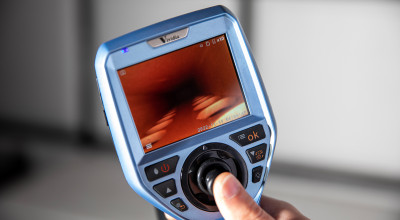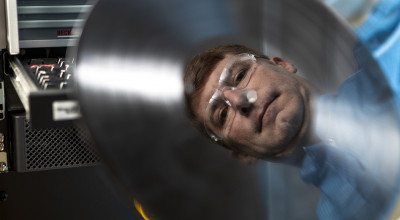Ninety years since its establishment, the Georgia Tech Research Institute (GTRI) has stayed true to its core mission: applying science and engineering to create practical solutions for the challenging problems of government and industry. Launched in 1934 as the Engineering Experiment Station (EES), GTRI has grown to nearly 3,000 employees supporting eight laboratories, with researchers in multiple locations around the country.
Across the years, GTRI’s pursuit of its core mission has produced a long series of technological innovations. “Innovation is really central to what we do at GTRI,” said Mark Whorton, GTRI’s chief technology officer. “Our national security sponsors typically bring us hard problems. And quite often, it requires innovation to solve these hard problems.”
What does innovation mean to fulfilling GTRI’s mission? Innovation happens when researchers from different labs and disciplines work together to alter the direction of technology development, often by bringing a fresh perspective and new capabilities, Whorton explained. Throughout its 90-year history, GTRI has relied on this innovation to solve some of the most challenging problems facing the nation – and that helps it attract the world’s top researchers.
“Researchers come to GTRI because they know they can get to apply the latest and greatest technologies to solve some of the most challenging problems that our nation faces today,” he said. “Over our history, we’ve come together with fresh ideas to solve the hard problems of those times and the innovations we generated served as the foundation for the next generation, creating a culture of innovation.”
For GTRI’s 90th Anniversary celebration, Whorton and his team were given the challenge of identifying the most impactful innovations produced during each decade of the organization’s history. They reviewed historical records and consulted with researchers and senior leadership to compile a long list of candidate innovations. Then came the hard part – choosing the nine most impactful developments.
The impact, Whorton explained, was measured by such factors as the changed capabilities it produced, new solutions brought to sponsors, new research directions engendered, effects on sponsors and collaborators, and how each innovation led to new approaches for addressing other challenges.
The result is the list below, which was presented publicly at the GTRI 90th Anniversary celebration on August 16, 2024.
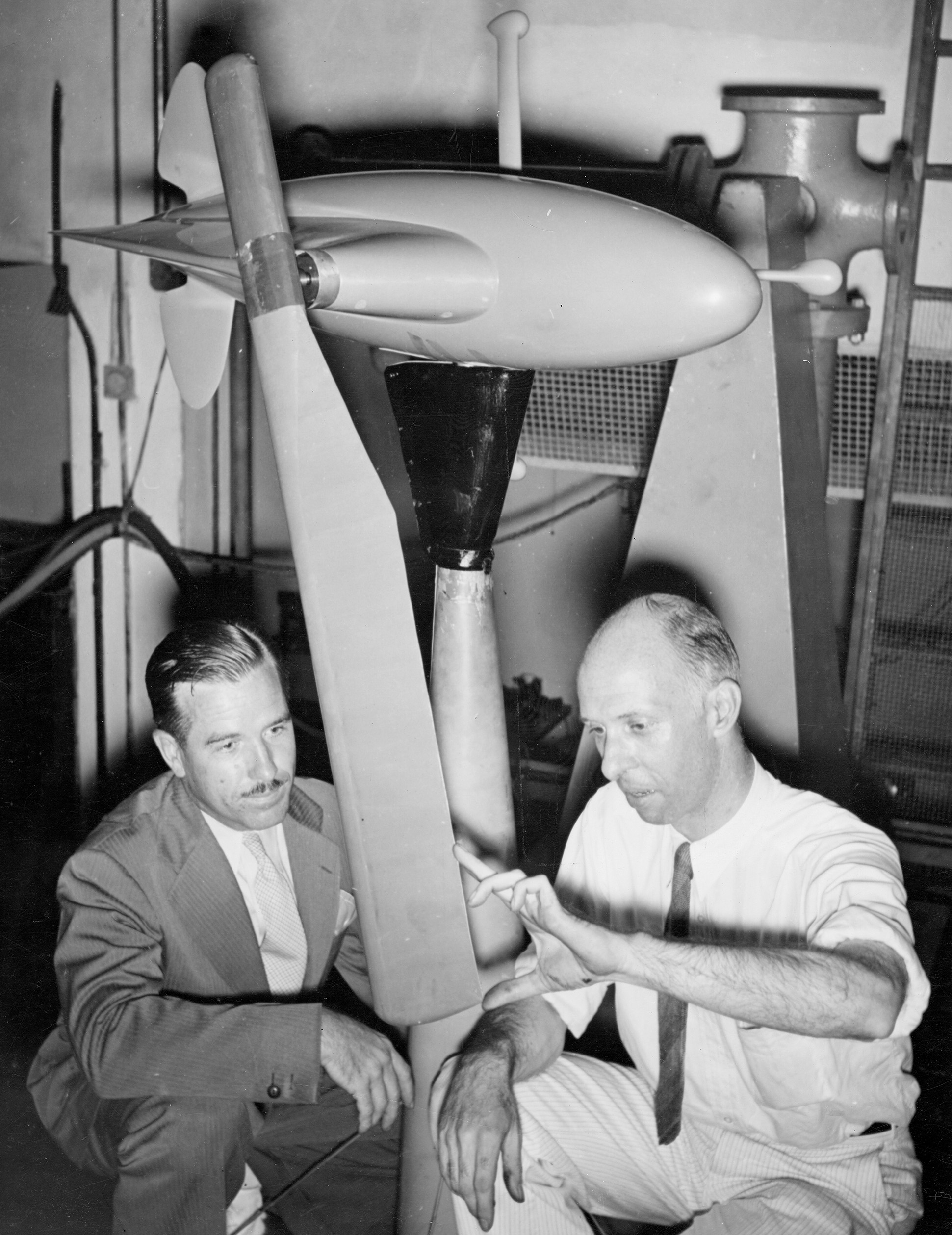
W. Harry Vaughan (left), the first director of EES/GTRI, and Montgomery Knight, director of Georgia Tech’s School of Aerospace Engineering, conducted tests of a helicopter rotor.
1930s-1940s: Autogyro Among Early Engineering Experiment Station (EES) Projects
In its earliest years, the Georgia Tech Engineering Experiment Station (EES), was staffed by graduate students and a mix of full-time and part-time researchers. Together, they built a foundation for innovative research important – as it is today – to advancing Georgia’s economy.
Montgomery Knight was director of Georgia Tech’s School of Aerospace Engineering, and also a long-time EES researcher. Helping advance the nation’s fledgling rotorcraft industry, he conducted research into the aerodynamics governing the flight of helicopters and autogyros – a type of aircraft that uses an unpowered rotor instead of a wing to create lift. The Aerospace Engineering School’s Montgomery Knight Building was named in his honor.
Other EES researchers pursued work in several areas of interest to Georgia, including developing new uses for raw materials such as cellulose produced from trees, cotton grown in the state, and kaolin mined in middle Georgia.

Engineering Experiment Station (EES) researchers built the first millimeter wave direction finding system for the U.S. Department of Defense.
1950s: Researchers Advance the Role of Millimeter Waves
Since the 1950s, GTRI researchers have played a crucial role in advancing the use of millimeter wave technologies for Department of Defense and other applications. Millimeter wave technologies operate at extremely high frequencies – 30 to 300 gigahertz – at wavelengths ranging from one to 10 millimeters.
The advantages of millimeter waves include their ability to provide accurate and high-resolution image identification, and the ability to make measurements while operating through smoke, fog, or rain. But they can be susceptible to absorption by certain atmospheric conditions. GTRI researchers conducted research to identify which frequencies worked best for specific applications and conditions.
GTRI built the first military-designation millimeter wave radar in the 1950s, providing a foundation for a series of increasingly capable systems in the decades that followed. GTRI researchers also characterized clutter and targets, providing data essential to the practical use of millimeter wave radar.
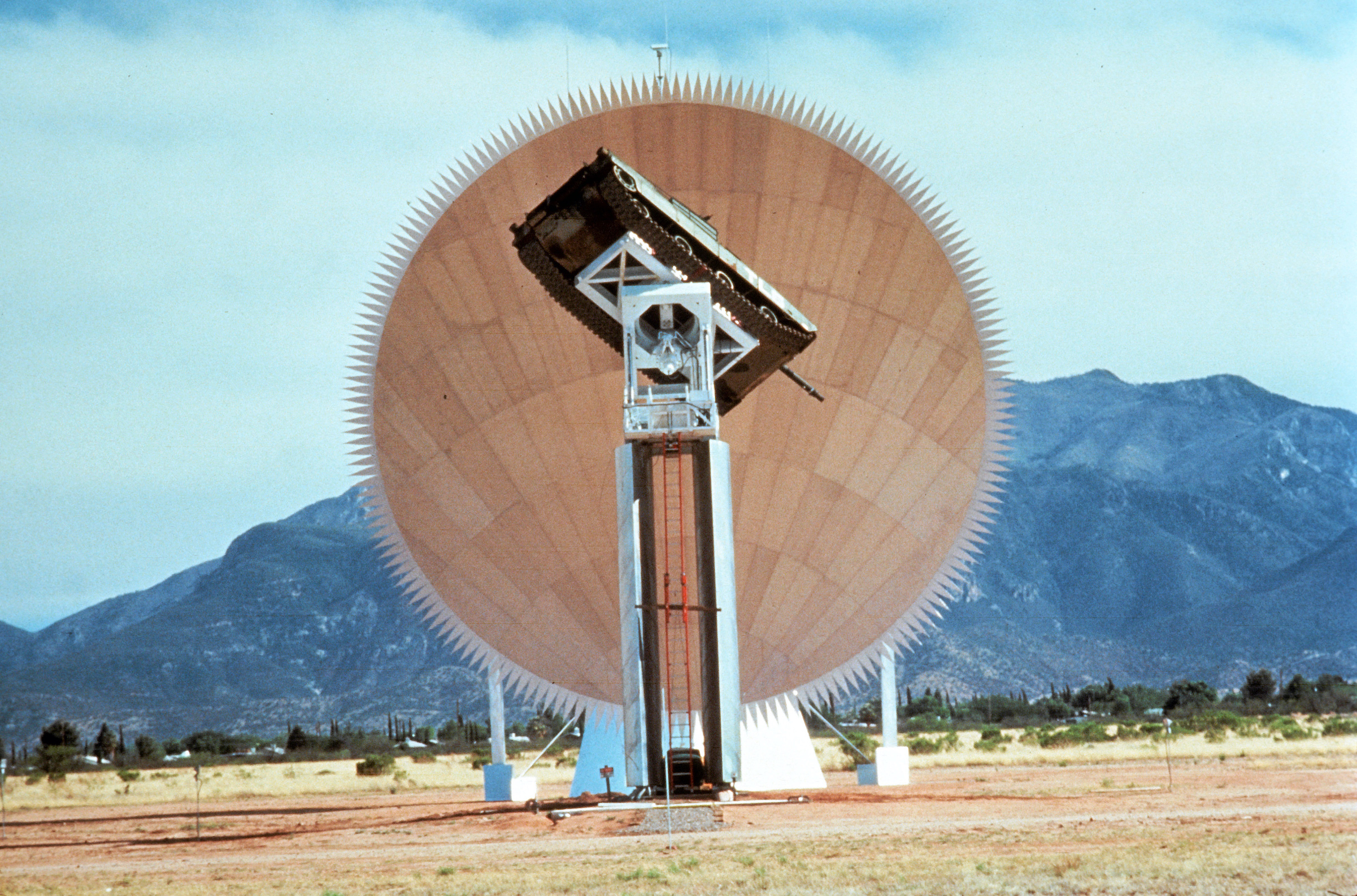
GTRI designed and built what was at the time the world’s largest outdoor compact range at Fort Huachuca, Arizona.
1960s: Compact Range Facilitates Radar and Antenna Testing
To accurately measure the radar cross section of targets or the characteristics of large antennas, a test range must mimic the large distance between the test antenna and the target that is encountered in the real-world environment. In the late 1960s, EES researcher Richard C. Johnson invented the compact range, which uses a parabolic reflector to alter a radar wave to make it seem as if the wave has traveled a long distance.
This technique has been widely adopted due to its ability to measure targets accurately in small spaces, particularly indoors. Indoor ranges can reduce interference from outside sources, eliminate weather concerns and improve security.
In 1989, GTRI built the world’s largest outdoor compact range for the U.S. Army at Fort Huachuca, Arizona, to measure antenna performance on full-sized vehicles. It included a 75-foot reflector and a lift to support targets up to 70 tons.
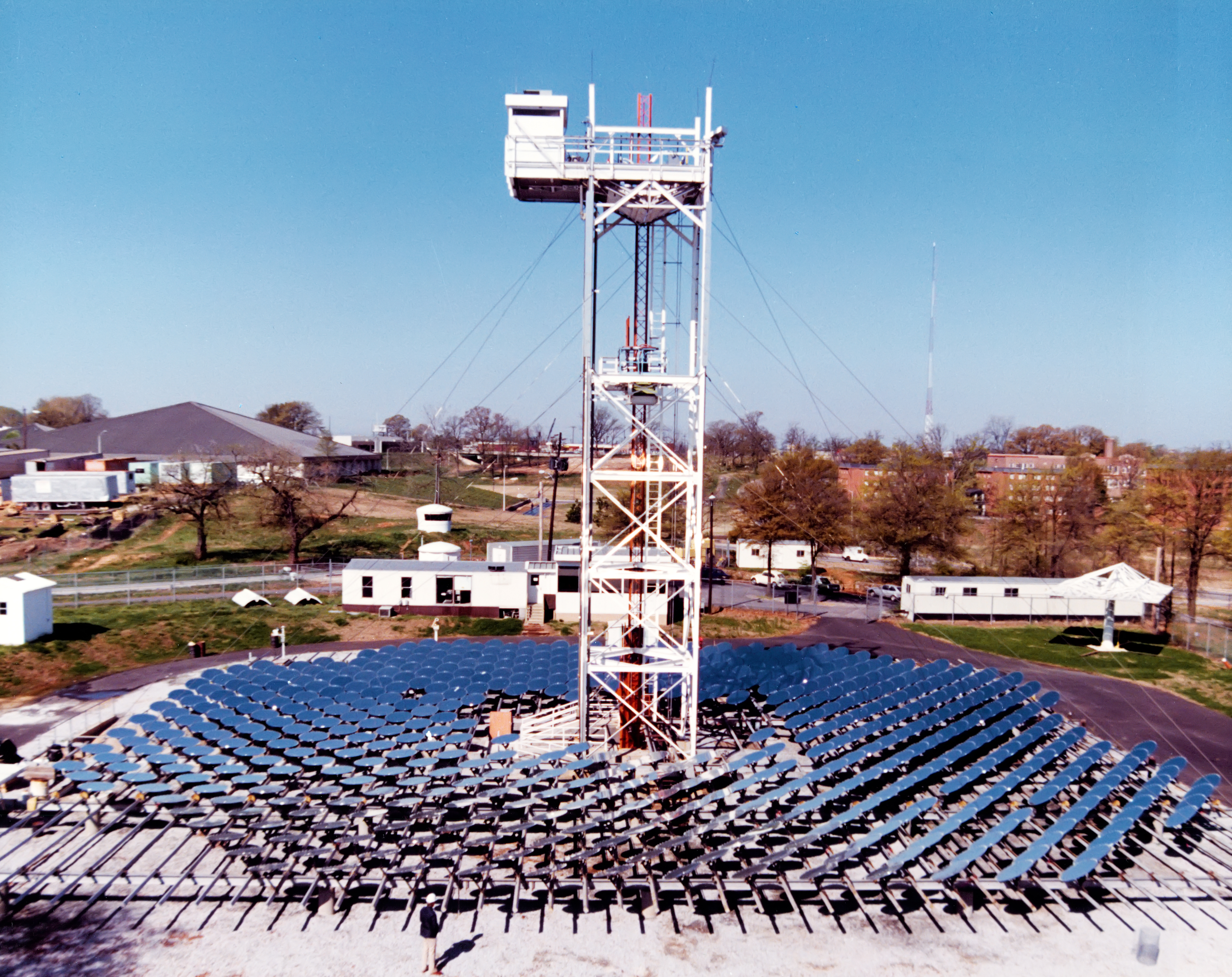
The Advanced Components Test Facility was a 325kW solar thermal furnace operated by EES for the U.S. Department of Energy.
1970s: Capturing the Sun’s Power Using 500 Mirrors
Harnessing the sun’s power may seem like a recent innovation, but for more than 40 years, GTRI researchers have been developing improved ways of capturing solar energy. In the 1970s, with support from the U.S. Department of Energy, they built a 325 kilowatt, 500-mirror solar thermal test facility that was then the second-largest of its kind in the United States.
The 500 precisely-aimed mirrors focused the sun’s energy on a receiver atop a tall tower visible from around campus. Researchers used the facility to capture heat for testing high-temperature materials, converting biomass to other forms of energy and developing improved ways of storing solar energy.
Using the facility, researchers developed improvements to pyrolysis, an established technique for producing liquid and gaseous fuels from biomass materials, and generated electricity with a Swedish-built external combustion engine that used pistons driven by helium heated by the intense sunlight.

GTRI researchers have applied machine vision technology to a broad range of applications, including food processing.
1980s: AgTech Researchers Improve Quality with Machine Vision
For industrial and other types of inspection, human eyes have amazing capabilities, but they can be undermined by their owners’ boredom. Humans watching production lines could therefore use a little help from the mechanical world – specifically, machine vision.
As part of their work to support Georgia’s poultry industry, GTRI researchers in the 1980s and 1990s applied machine vision – specialized cameras, lights and interpretation algorithms – to production lines examining everything from chicken nuggets to hamburger buns. Combined with robots able to accurately retrieve substandard items, the systems helped ensure high quality on processing lines.
Since then, GTRI researchers have broadly applied their machine vision expertise, with the most recent application being digital train inspection portals developed in collaboration with Norfolk Southern Corporation. Advanced machine vision, combined with artificial intelligence developed by the company, examines train cars moving at speeds of up to 60 miles per hour.

Operators demonstrate FalconView® aboard a C-130 aircraft parked at Dobbins Air Reserve Base near Atlanta, Georgia.
1990s: FalconView® System Helps Warfighters Navigate, Avoid Threats
FalconView® is a mapping system developed by GTRI for the U.S. Department of Defense. Released for the Air National Guard in 1994, FalconView’s sponsor and user base has expanded to include all branches of the U.S. military. Today, it is used by the military, various federal agencies, and allied countries for a variety of mission planning, intelligence, and operational tasks. FalconView serves as the mapping interface for mission planning software suites, including the Joint Mission Planning System (JMPS), Portable Flight Planning System (PFPS), and XPlan.
FalconView® displays various types of maps, including aeronautical charts, satellite imagery, and elevation maps. It also supports a large number of geographically referenced overlays that can be displayed and printed over any map background. Combined with a global positioning system (GPS) receiver, FalconView® serves as a navigation system on several airborne, land and sea platforms, providing real-time situational awareness in transit.
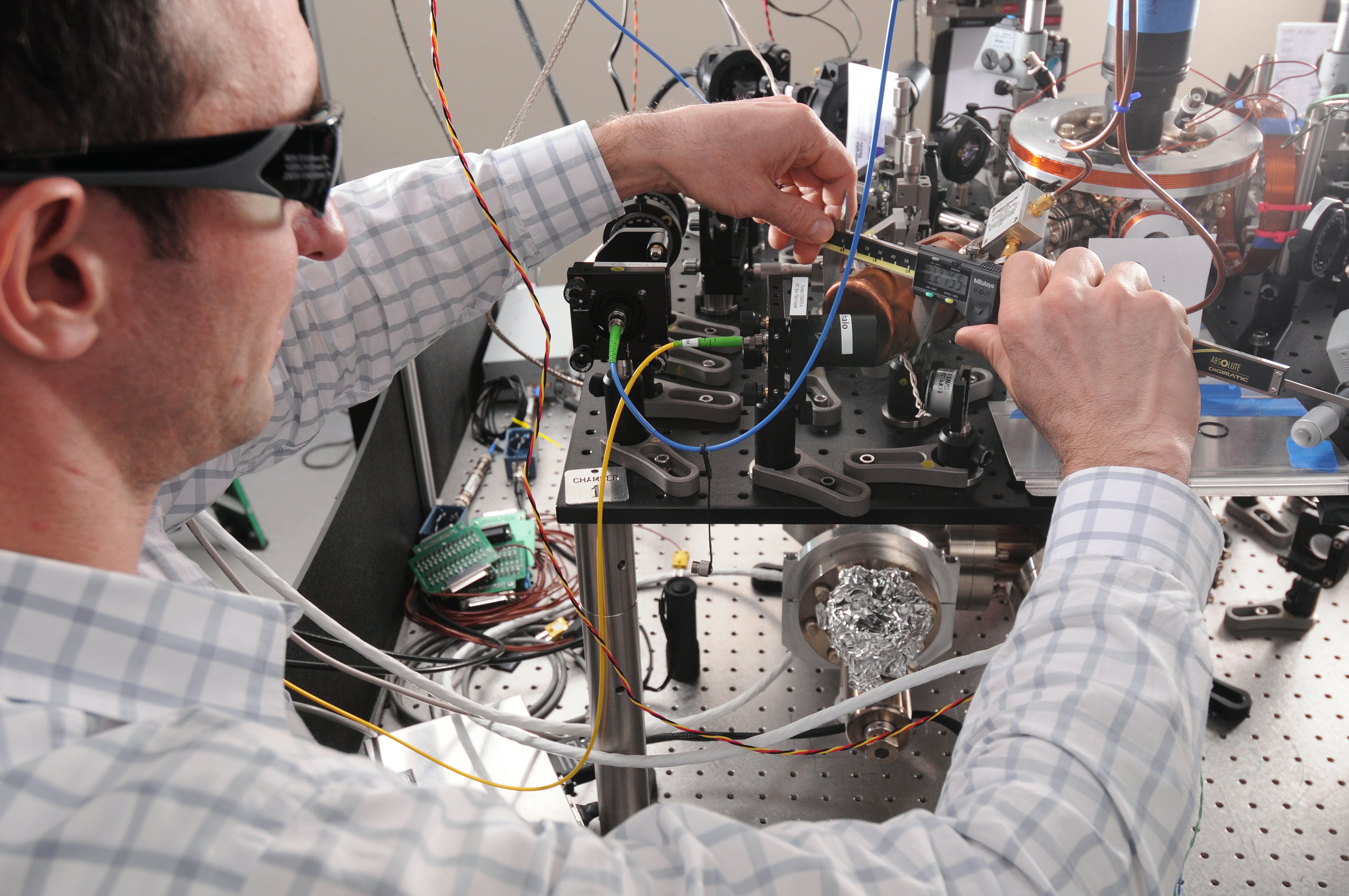
Researcher Kenton Brown adjusts optical components in an experimental setup within GTRI’s Quantum Information Systems Branch.
2000s: Ion Traps Support Applied Quantum Systems
Quantum computers harness quantum mechanics to solve certain otherwise intractable problems. For the past two decades, GTRI researchers have been advancing the ability to control and measure quantum states of ions, one of the most promising quantum computer architectures. Researchers have designed, fabricated and demonstrated a number of ion traps and state-of-the-art components to support integrated systems.
Researchers have also devised new quantum gates with record fidelity, demonstrated novel fast cooling schemes, built entirely new ion trap architectures and investigated computing methods that break algorithms into pieces to be executed in parallel on quantum and classical machines to harness the strengths of each.
Over the last decade, researchers have applied similar tools to develop quantum sensors and atomic clocks. These devices, operating at the fundamental limits of nature, offer improved sensitivity or stability for sensing electromagnetic fields, measuring acceleration, or serving as highly-stable frequency references.
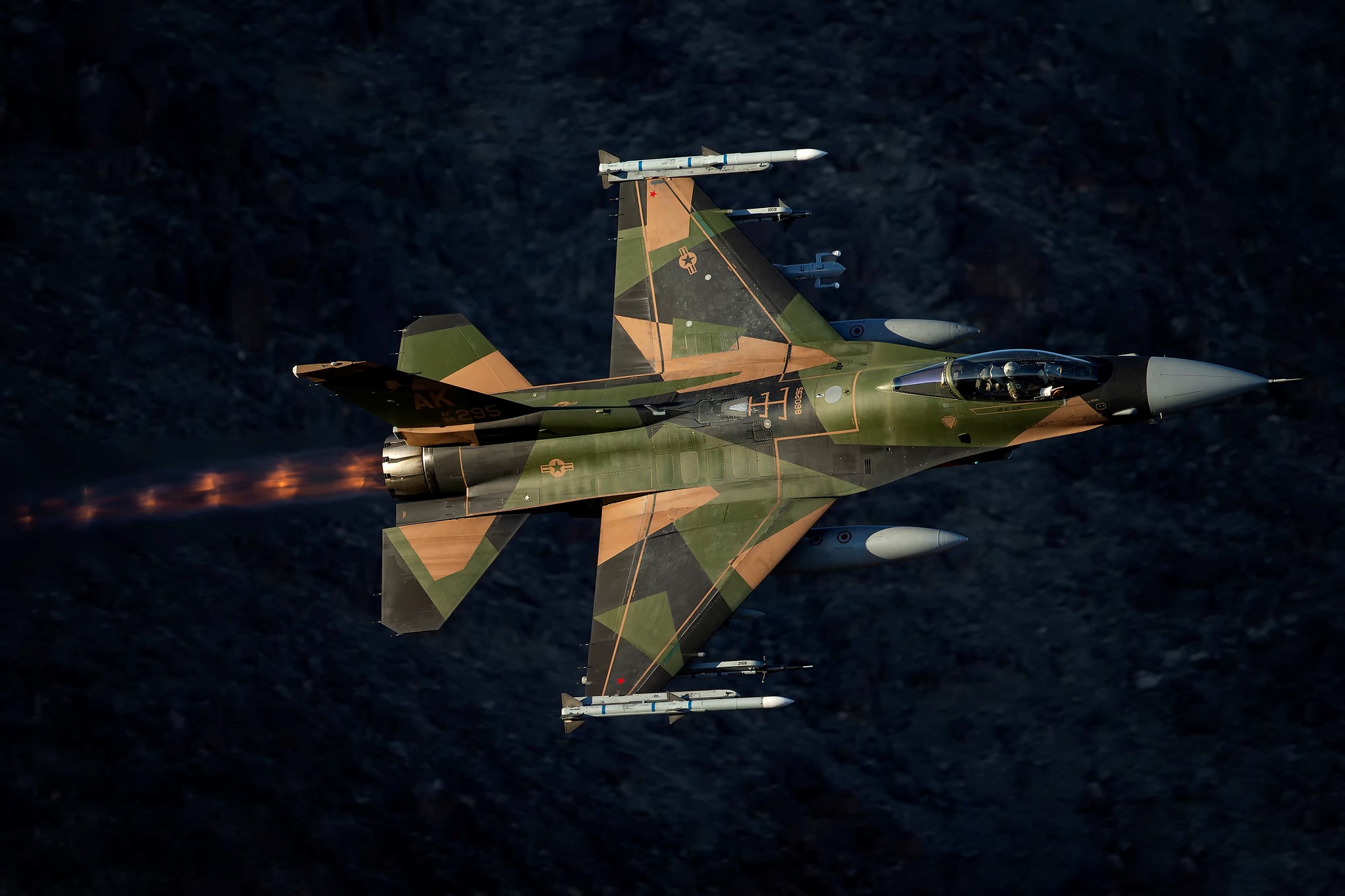
Angry Kitten Attack Pods have been flying on multiple aircraft, including F-16s.
2010s: Angry Kitten® Pods Flown on Multiple Aircraft, Evaluated by Air National Guard
More than a decade ago, GTRI began development of the Angry Kitten® system to help counter rapidly-evolving electronic warfare threats. Angry Kitten® Electronic Attack Pods have been flying on F-16s since 2017 and on F-18 test jets since 2021. In 2023, General Atomics began integration of the pods onto the MQ-9 Reaper, where they have potential applications in test and evaluation as well as possible combat roles.
The pods have also been integrated onto A-10 aircraft by the Air National Guard, with multiple flights, including the 2023 Northern Edge large force exercise, during which F-16s and A-10s equipped with the pods fought mock battles against fifth-generation fighters. During 2024, the Air National Guard plans to complete an operational assessment of the pods for use on Guard F-16s in a combat role. This is a follow-on to an earlier Air Combat Command Operational Assessment.
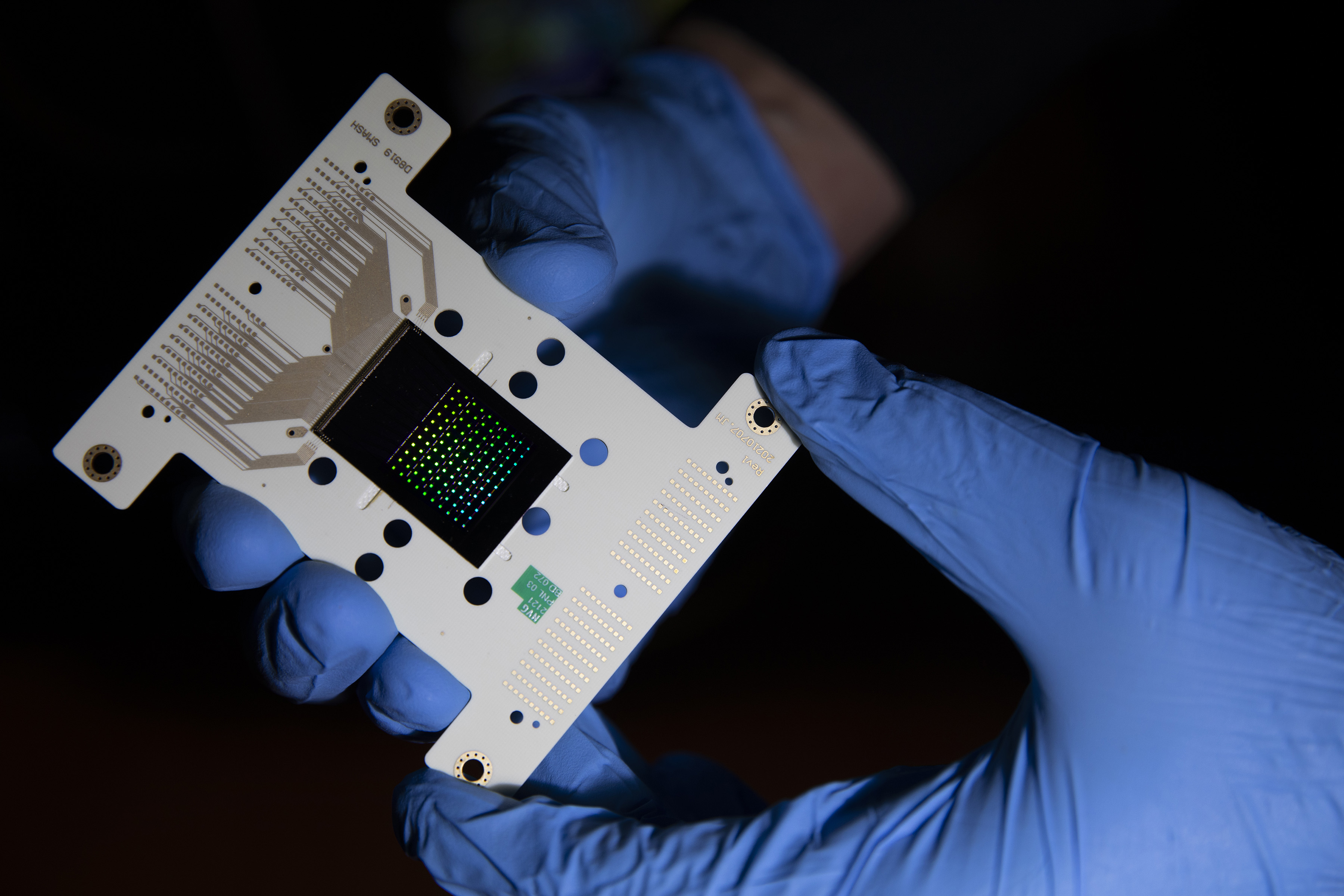
Researchers developed a microchip for growing DNA strands that could provide high-density 3D archival data storage at ultra-low cost.
2020s: DNA Storage Could Help Address Archival Data Needs
GTRI researchers are helping address the challenge of archivally storing the overwhelming volume of data that must be retained – but is seldom retrieved. With funding from the Intelligence Advanced Research Projects Activity (IARPA), researchers have collaborated with two California companies to advance a technique that could use synthetic DNA to store that data.
DNA data storage uses the four bases that make up biological DNA - adenine (A), thymine (T), guanine (G) and cytosine (C) – to store data in a way that is analogous to the zeroes and ones of traditional computing.
Researchers have made significant advances toward the goal of a new microchip able to grow DNA strands that could provide high-density 3D archival data storage at ultra-low cost – and be able to hold that information for centuries. Researchers have also developed a correction system able to compensate for errors in reading data stored in the DNA.
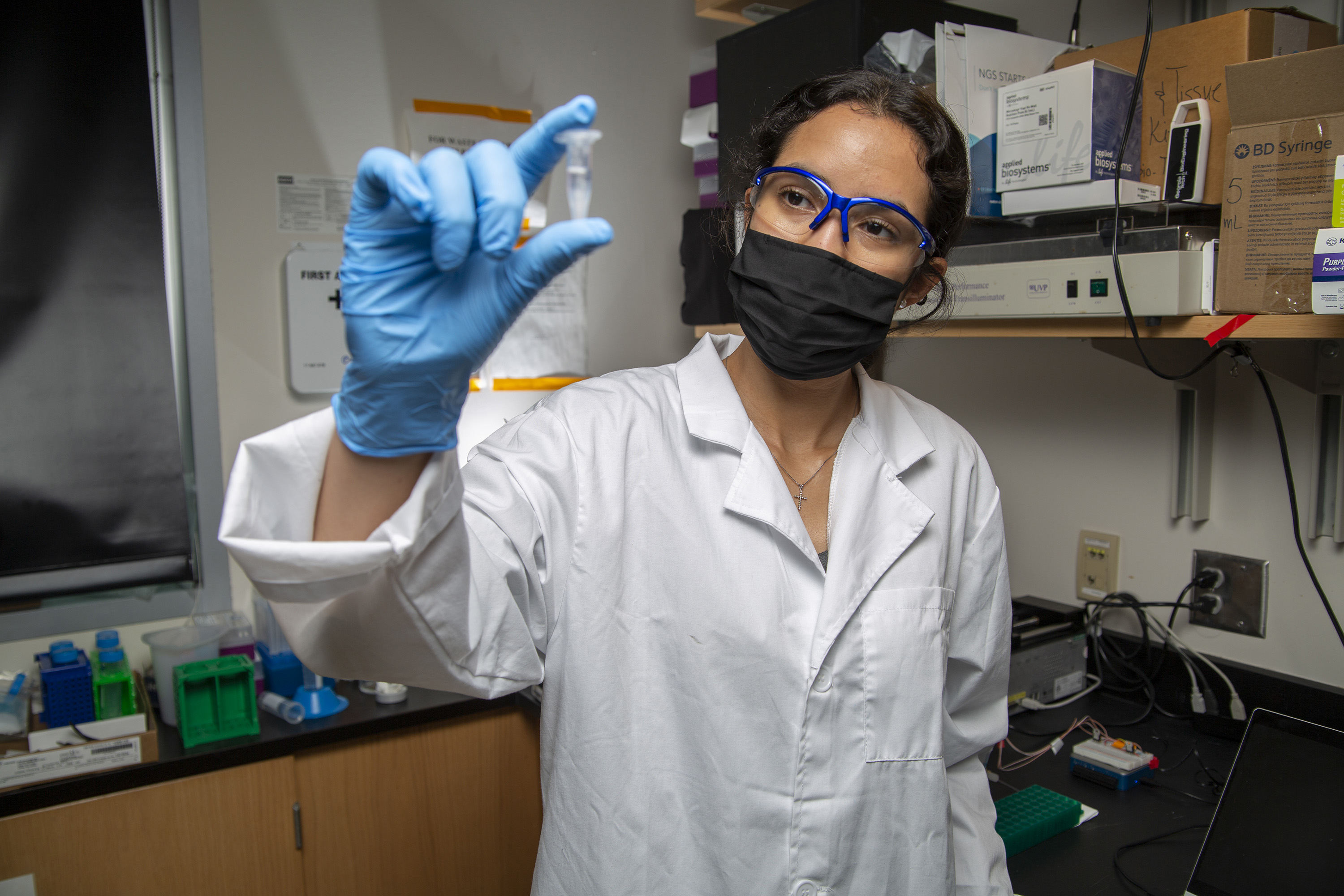
Among the “big bets” GTRI is making for the future is the intersection of biology and engineering (IBE), fueled by collaboration with Georgia Tech academic faculty and researchers from Emory University.
Innovation for the Decades Ahead
So what’s next?
As GTRI continues moving forward, it will build on this remarkable record of innovation and achievement to fulfill its strategic mission: enhancing Georgia’s economic development, serving national security, improving the human condition, and educating future technology leaders.
The CTO office has identified five strategic technologies that will be essential to GTRI going forward. These technologies integrate capabilities from the eight laboratories and will help GTRI serve its sponsors and collaborators – while differentiating it from competitors. These technologies include:
- Artificial intelligence (AI) for national security,
- Resilient cyber-physical systems,
- Decision superiority at the contested edge,
- Agile, evolving electromagnetic spectrum operations,
- Integrated autonomy.
AI is everywhere we turn in the world today, from TV streaming services that recommend movies to ChatGPT helping us write better. The challenge for GTRI is that the stakes for using AI are very much higher for national security applications than for selecting the best new movie to watch.
“When commanders on the battlefield use AI to generate recommended actions based on the fusion of data and information from the battlefield, we have to be much more confident in the quality of information being generated and given to us,” Whorton said. “GTRI is focusing on how we can trust the information that is provided to us by AI disciplines such as machine learning. These are nonlinear, time-varying dynamical systems, and that means we don’t have a lot of mathematical formalities that can apply.”
The issue comes down to trust, Whorton explained. “We must place clear bounds on the amount of trust that we can put in these systems.”
With support from sponsors, GTRI is working to develop AI algorithms that can be trusted, as well as methods to test and verify existing algorithms to measure how much trust can be placed in them. This trust decision can be even more challenging because national security AI must often operate with smaller data sets than the massive models used in consumer AI.
“To us at GTRI, trust is crucial as we develop models, tools and processes that allow us to make good decisions, especially in contested environments where AI and machine learning play a key role,” Whorton said.
“Big Bets” and GTRI’s Differentiator
Beyond the strategic technology areas are two new initiative areas called “big bets” in which GTRI believes it can be a thought leader in the future. Developing these areas will depend on reaching out across the Georgia Tech campus to collaborate with academic researchers, and finding common interest with other collaborators – such as medical researchers at Emory University.
These two areas are:
- Intersection of biology and engineering (IBE),
- Space beyond Earth orbit.
Whorton sees collaboration beyond GTRI units as key to developing capabilities that will power future solutions for sponsors. GTRI is funding these collaborations through its Independent Research and Development (IRAD) program, which supports the advance of new technologies and innovation. GTRI’s IRAD program funded approximately 300 projects during the past year, and about a quarter of those were collaborative efforts with Georgia Tech academic units.
“When national security sponsors come to us to develop innovations to solve hard problems, they’re not just coming to GTRI, they are coming to all of Georgia Tech,” he said. “As a university affiliated research center (UARC), we are distinguished by the extent to which we can reach into campus and collaborate. This is a really powerful differentiator for GTRI.”
Writer: John Toon (john.toon@gtri.gatech.edu)
GTRI Communications
Georgia Tech Research Institute
Atlanta, Georgia USA
The Georgia Tech Research Institute (GTRI) is the nonprofit, applied research division of the Georgia Institute of Technology (Georgia Tech). Founded in 1934 as the Engineering Experiment Station, GTRI has grown to more than 2,900 employees, supporting eight laboratories in over 20 locations around the country and performing more than $940 million of problem-solving research annually for government and industry. GTRI's renowned researchers combine science, engineering, economics, policy, and technical expertise to solve complex problems for the U.S. federal government, state, and industry.


